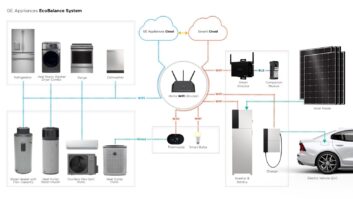SAN FRANCISCO —
The number of net new cellular
subscriptions grew in the first half for the first time after
four consecutive years of first-half declines, CTIA
statistics show.
Growth was driven presumably by the growing
number of e-readers and other portable devices with
embedded cellular, cellular data modems for laptops,
machine-to-machine (M2M) applications, people who
use both a personal cellphone and a company-provided
model, and growing ownership by pre-teens.
For the January through June 2010 period, the number
of net new cellular subscriptions grew 14.7 percent
over the year-ago period to 7.2 million, expanding
the total subscription base to 292.8 million, CTIA’s
semiannual carrier survey shows.
The expansion drove up the penetration rate of cellular
subscriptions to 94.6 percent of the U.S. population,
up from the year-ago 90.1 percent, based on
the Census Bureau’s population estimates as of July
1 of each year. The bureau’s population estimate as
of July 1, 2010, was 309,629,415, a spokesman told
TWICE.
In its survey, CTIA also found that the number of
voice-calling minutes plateaued at 2.26 trillion minutes
for the 12 months ending in June 2010 compared
with 2.24 trillion minutes during the year-ago period
and 2.23 billion in the 12 months ending June 2008.
In contrast, the number of minutes used came to 1.26
trillion in the 12 months ending June 2005.
The number of messages sent, however, is growing
at a fast clip, rising to 1.81 trillion messages in the 12
months ending June 30, up from the year-ago 1.36 trillion
and 601 billion during the 12 months ending June 2008.
CTIA also found that the number of smartphones
and wireless-enabled PDAs in use hit 61.2 million in
June 2010, up from June 2009’s 40.7 million.
CTIA developed the statistics from a survey of
carriers serving 95.5 percent of all wireless subscribers.
Estimates were compiled for systems that
did not respond.













